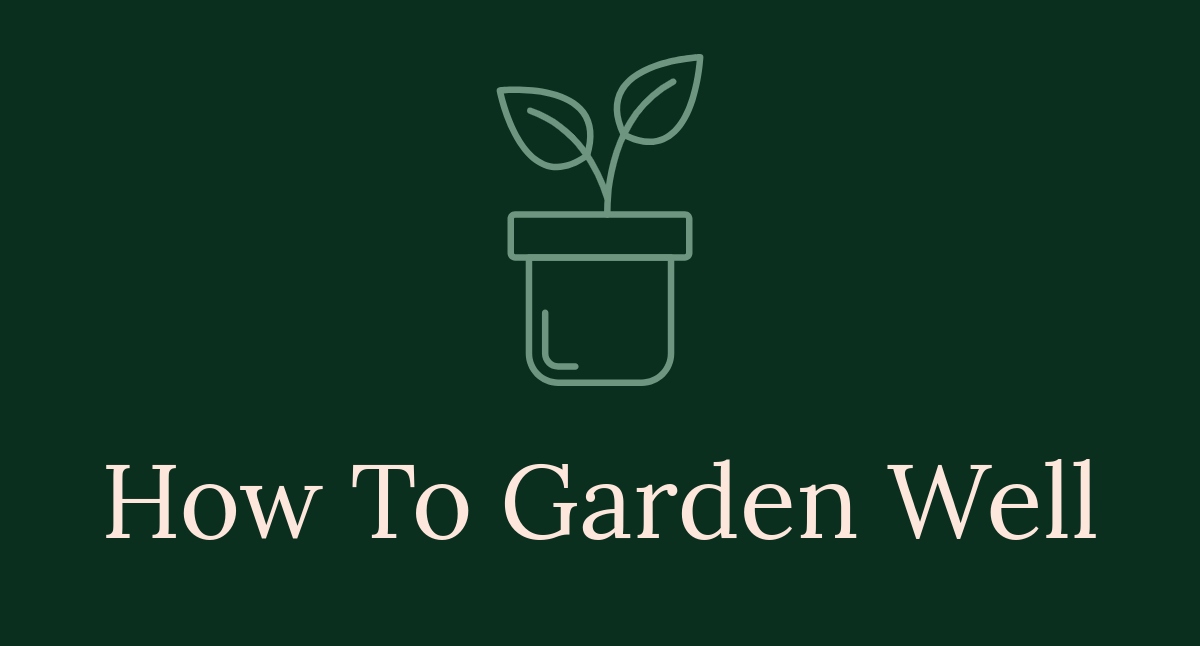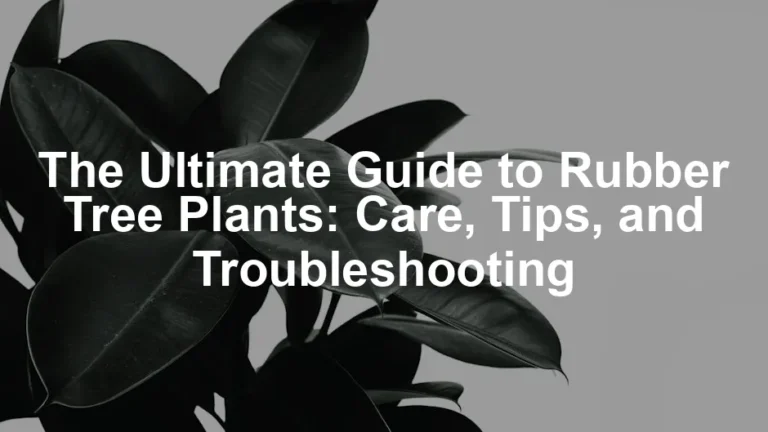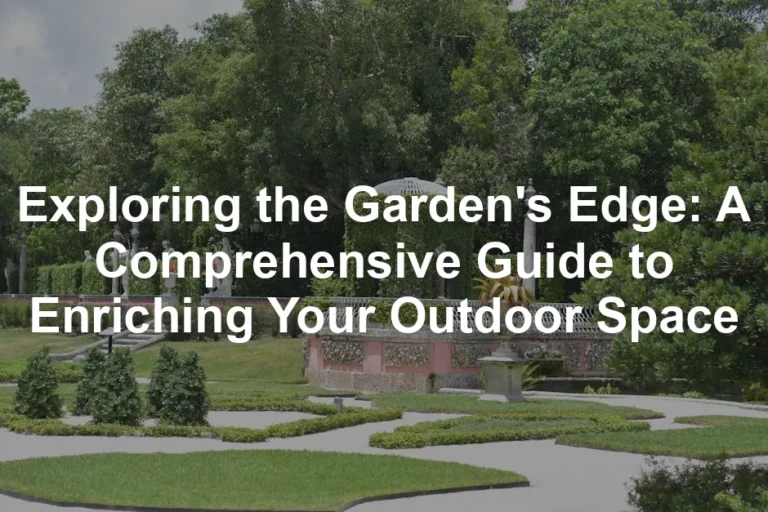

How to Build a Greenhouse Using Recycled Materials: A Comprehensive Guide
Introduction
Building a greenhouse using recycled materials is a brilliant way to blend sustainability with creativity. Imagine transforming old windows, plastic bottles, or wood pallets into a vibrant space for your plants. Not only does this approach save you money, but it also helps reduce waste and minimizes your environmental footprint. It’s like giving new life to things that would otherwise end up in a landfill.
Recycling materials for your greenhouse opens up a world of possibilities. You can express your unique style while contributing positively to the planet. In this article, we’ll guide you through the ins and outs of creating your greenhouse masterpiece. You’ll discover the benefits of greenhouses, the types you can build, and how to turn everyday items into a flourishing plant haven. Let’s get started on this eco-friendly adventure!
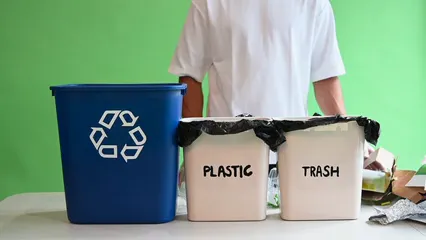
Understanding Greenhouses
What is a Greenhouse?
A greenhouse is a specially designed structure that provides an ideal environment for growing plants. It captures sunlight, retains heat, and maintains humidity levels. Think of it as a cozy, sun-soaked retreat for your favorite flowers and veggies. There are various greenhouse types, from simple cold frames to elaborate glass structures. Each type serves the same purpose: to create a controlled climate that extends your gardening possibilities.
Benefits of Greenhouses
Greenhouses are a gardener’s best friend. They allow you to extend your growing season, meaning you can enjoy fresh produce even in the off-season. Research shows that gardeners using greenhouses can increase their yield by up to 50%. Plus, they protect plants from pests and harsh weather, ensuring your hard work doesn’t go to waste.
By providing a controlled environment, greenhouses help maintain optimal temperatures and humidity levels. This means your plants are less stressed and more likely to thrive. Who wouldn’t want a garden that’s both productive and resilient? Embrace the greenhouse lifestyle; it’s a game changer for any gardening enthusiast!

Why Use Recycled Materials?
Environmental Impact
Using recycled materials for your greenhouse is a fantastic way to reduce waste. When you repurpose items like plastic bottles or old windows, you keep them out of landfills. This not only minimizes trash but also lowers your carbon footprint. Each recycled item means less energy spent on creating new materials.
Now, let’s talk about the circular economy. This concept focuses on keeping resources in use for as long as possible. By recycling building materials, we give them a second life. Each time we reuse, we contribute to a more sustainable system. It’s like a never-ending cycle of good vibes for the planet!

Cost-Effectiveness
Building a greenhouse with recycled materials can also be a wallet-friendly adventure. For instance, wood pallets can often be found for next to nothing! When it comes to plastic bottles, those are practically everywhere. Imagine using these items to create a sturdy structure while saving bucks. Your wallet will thank you!
Consider this: A typical greenhouse can cost thousands of dollars. In contrast, a recycled-material greenhouse can be built for a fraction of that. With all the savings, you might even splurge on some fancy seeds!
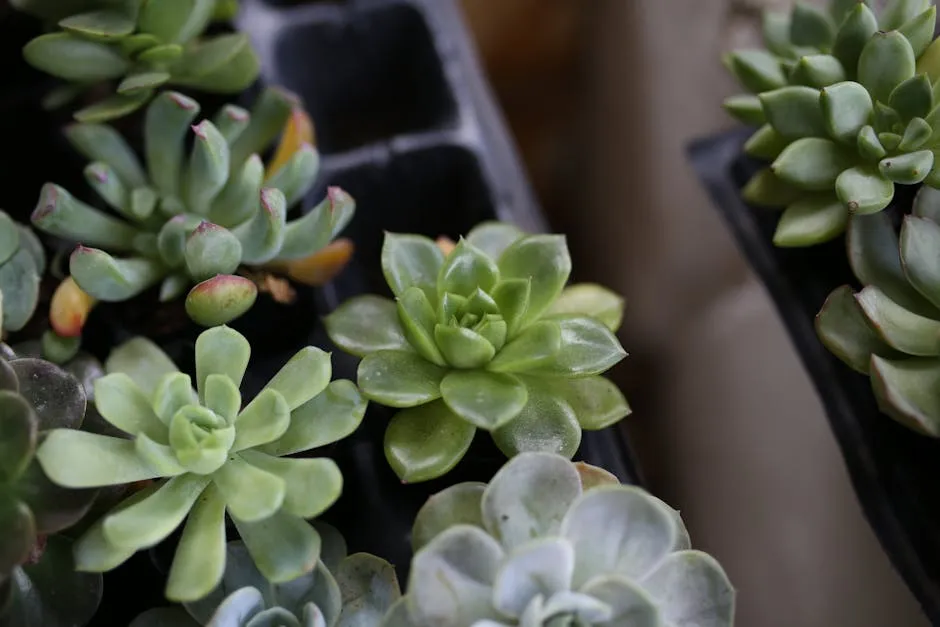
Creative Expression
One of the most exciting aspects of using recycled materials is the chance to get creative. Each item has its own story and character, adding unique charm to your greenhouse. You can mix and match different materials to create something truly one-of-a-kind.
Think about it. An old window can become a beautiful greenhouse wall. Or a set of mismatched plastic bottles can form an eye-catching border. The possibilities are endless! Plus, it’s a fun way to showcase your personality. Your greenhouse will be an artistic statement that reflects your style.
In summary, choosing recycled materials for your greenhouse is a win-win. It’s eco-friendly, budget-friendly, and a great outlet for creativity. Why not turn trash into treasure? Your plants will thrive, and the planet will thank you!
If you’re interested in using recycled materials for your gardening projects, check out this guide on how to build a raised garden bed with recycled materials.
Materials Needed
Common Recycled Materials
Old Windows
Old windows are fantastic for constructing greenhouse walls and roofs. They let in sunlight while providing insulation. Plus, they come with built-in character—who doesn’t love vintage charm? You can secure them together to create sturdy walls. Arrange them at an angle for a slanted roof. This design promotes rain runoff, keeping your plants dry and happy. Just be sure to reinforce the frame to handle strong winds. With a little creativity, these forgotten pieces can become the backbone of your greenhouse!
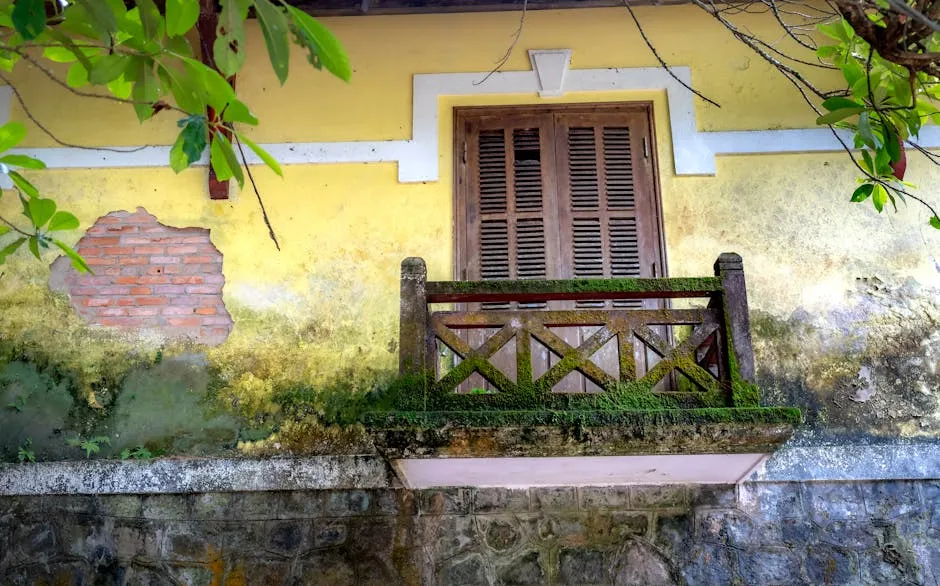
Wood Pallets
Wood pallets are the unsung heroes of recycling projects. Dismantling pallets is a bit like a puzzle, but it gets easier with practice. Use a pry bar to separate the slats without damaging them. Once you have enough pieces, they can be transformed into the framework for your greenhouse. Their sturdy nature makes them perfect for building walls or even shelves inside. Plus, you can paint or stain them for a unique look. Who knew pallets could be both functional and stylish?
Plastic Bottles
Plastic bottles are more than just containers for your favorite drinks; they can also play a vital role in your greenhouse. Cut the bottoms off large bottles and bury them upside down in the soil. This creates mini cloches that protect seedlings from pests and harsh weather. Alternatively, use them to create walls by connecting them with string or wire. Not only does this method recycle waste, but it also adds a quirky touch to your greenhouse. Talk about turning trash into treasure!

Other Creative Options
Don’t stop at just windows, pallets, and bottles. Think outside the box! Old door frames can become entryways or supports. Metal scraps work well for reinforcing structures and adding stability. Discarded furniture, like wooden chairs or tables, can be repurposed into shelves or potting benches. Every piece you salvage tells a story, transforming your greenhouse into a unique oasis. The creative possibilities are endless—let your imagination run wild!
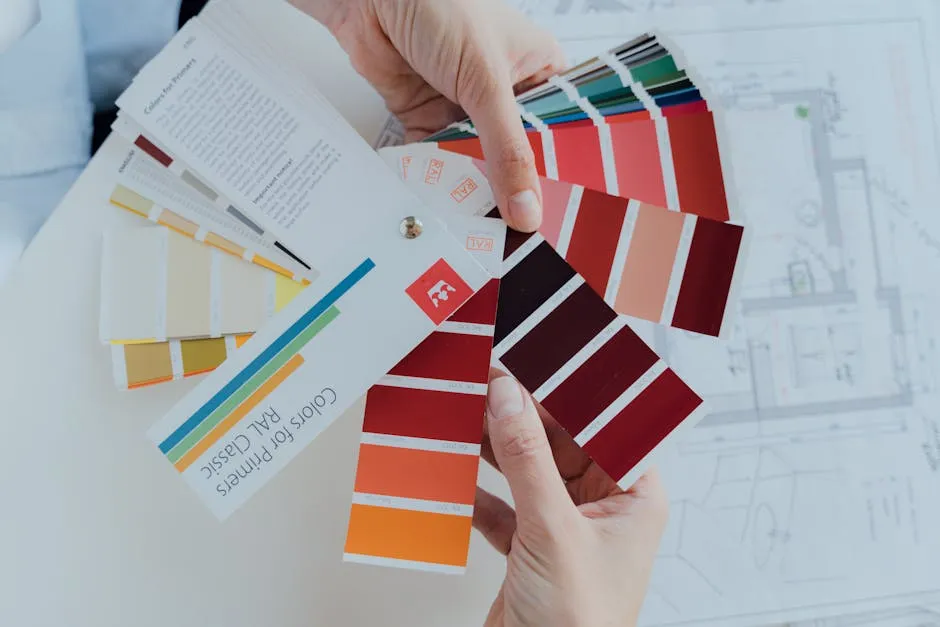
Step 2: Prepare the Site
Before you start building your greenhouse, you need to prepare the site. First, clear the area of any debris, rocks, or unwanted vegetation. Picture yourself in a mini-war against weeds—victory will require some elbow grease! Rake the ground smooth, ensuring a level surface for your structure. Uneven ground can lead to issues with stability later, so let’s not skip this step.
Next, consider the importance of a solid foundation. A sturdy base is crucial for your greenhouse. If your foundation is weak, your greenhouse might wobble like a toddler on roller skates. You can use a simple gravel pad or wooden frame filled with soil to create a solid base. This helps with drainage and keeps your greenhouse secure. Remember, a great greenhouse starts with a great foundation!

Step 3: Build the Frame
Now that your site is ready, let’s build the frame! Gather your recycled materials—old windows, wood pallets, or even scrap metal. Start by assembling the base frame, ensuring it’s square and level. This is like building a house of cards; if the base isn’t right, everything will collapse!
For walls, use your salvaged windows. Secure them with screws or nails, reinforcing joints with brackets for extra strength. Don’t worry if they’re mismatched—unique designs are part of the charm! Ensure all joints are tight; we don’t want any drafts sneaking in. Once the walls are up, add cross-bracing for stability. This will help your greenhouse stand strong against wind and weather.
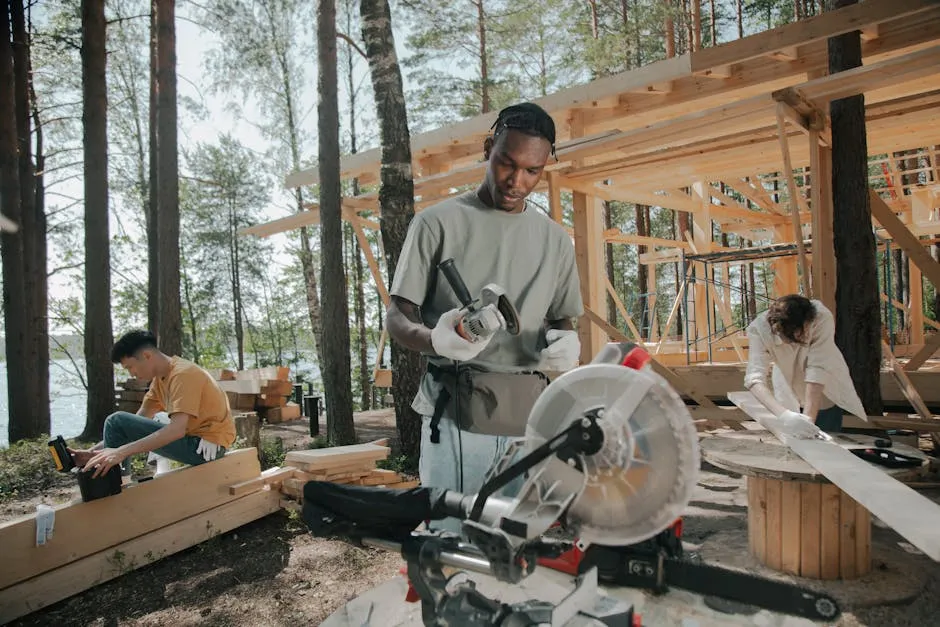
Step 4: Add the Covering
Next, it’s time to add the covering. You have a couple of options here: glass panels or plastic sheeting. If you’re using glass, be gentle—treat it like your favorite coffee mug! Carefully fit the panels into place and secure them with screws.
If you choose plastic sheeting, stretch it tightly over the frame. Use staples or clips to attach it securely. Don’t forget to seal any openings! Proper sealing will help retain heat inside your greenhouse, ensuring your plants feel cozy. A well-covered greenhouse is like a warm hug for your plants!

Step 5: Ventilation and Irrigation
Every greenhouse needs a little breathing room! Create ventilation by adding windows or vents. Adjustable openings allow you to regulate temperature and humidity, like giving your plants a refreshing breeze on a hot day. You can use old window frames as hinged vents for easy access, ensuring your plants don’t overheat.
When it comes to irrigation, think simple. A drip irrigation system is a great option, delivering water directly to the roots. You can even reuse old soda bottles! Puncture holes in them, fill with water, and bury them upside down in the soil. Your plants will drink happily without you needing to water them daily. With these systems in place, your greenhouse will thrive, and so will your gardening ambitions!
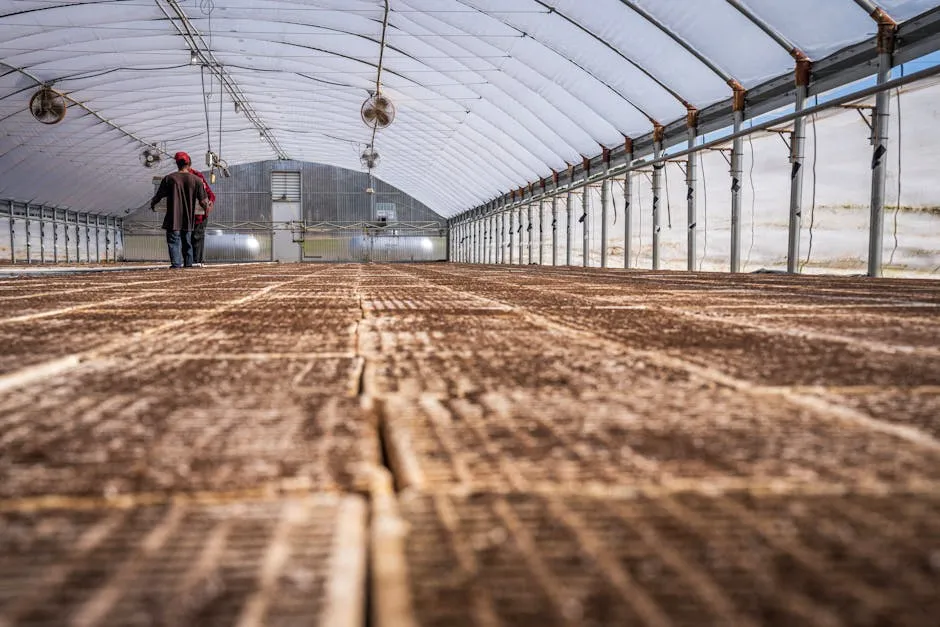
Maintenance Tips
Regular Maintenance
Maintaining your recycled-material greenhouse is essential for plant health. Start with monitoring temperature and humidity levels. A thermometer and hygrometer will help you keep tabs on these factors. Ideally, aim for a temperature between 70°F and 80°F during the day and slightly cooler at night. Humidity should stay around 50-70%.
Don’t forget about pest management! Regularly check for pests like aphids, whiteflies, and spider mites. A simple solution? Introduce beneficial insects like ladybugs or lacewings. They’re nature’s little pest control agents! Additionally, consider using organic sprays made from neem oil or insecticidal soap.
Proper plant care also plays a significant role. Water your plants consistently, ensuring the soil remains moist but not soggy. Don’t neglect pruning; it helps maintain airflow and encourages healthy growth. Lastly, check for any signs of disease. Early detection can prevent a minor issue from becoming a major headache.
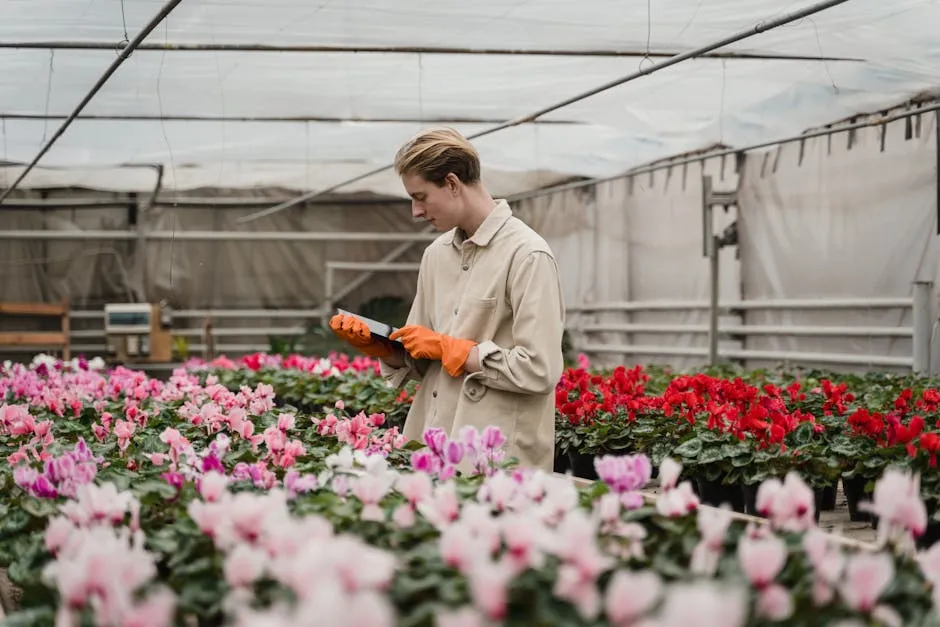
Seasonal Considerations
As seasons change, so should your greenhouse maintenance routine. Preparing your greenhouse for winter is vital. Insulate your walls with bubble wrap or old blankets to prevent heat loss. Consider adding a heater if you live in a colder climate.
In summer, ventilation becomes critical. Be sure to open windows or vents to allow hot air to escape. You can also use shade cloth to protect your plants from scorching sun. Watering needs may increase, so keep an eye on moisture levels.
By adjusting your maintenance routine according to the seasons, your greenhouse will thrive year-round, supporting your gardening goals.
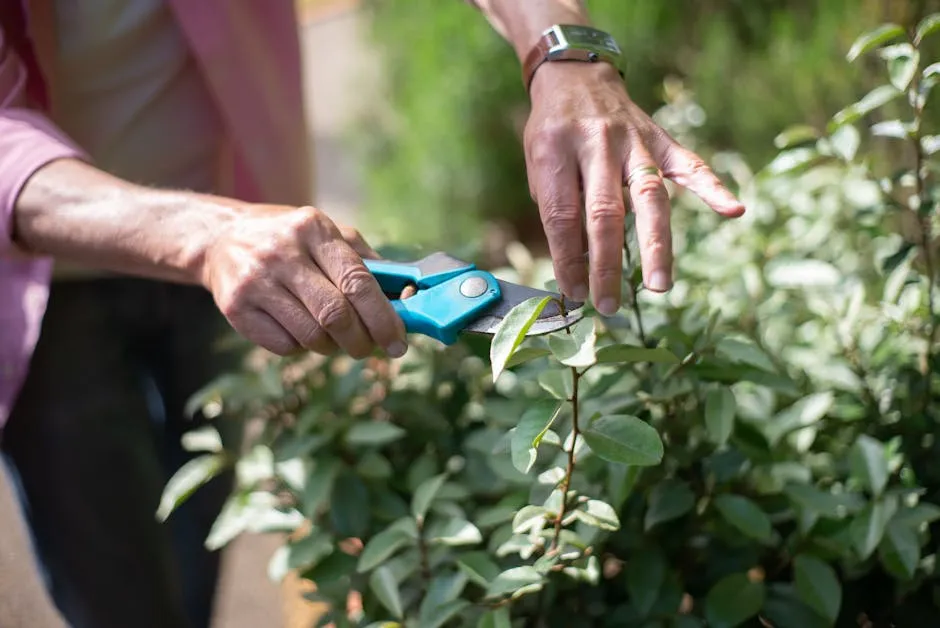
Conclusion
Building a greenhouse from recycled materials offers numerous benefits. You save money, reduce waste, and create a unique space for your plants to flourish. This eco-friendly project contributes to sustainability and allows for personal expression in your gardening journey.
So, are you ready to embark on your DIY greenhouse adventure? Share your experience and ideas with fellow gardeners! Every small step towards sustainability counts. Happy gardening, and may your greenhouse become a thriving oasis for your plants!
Please let us know what you think about our content by leaving a comment down below!
Thank you for reading till here 🙂
All images from Pexels
